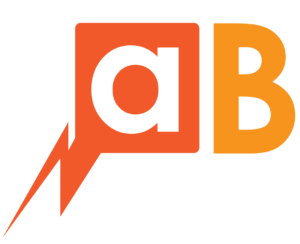Personalization matters in advertising. But creating ads that resonate with each unique audience can prove challenging for any marketer. That challenge is made even more difficult when your product addresses an issue most people would rather not talk about: cold sores.
Cold sore relief medication Abreva traditionally advertises to a 35-and-over audience through media like TV. However, Abreva found that most sufferers get their first cold sore as teenagers. This discovery prompted the team to rethink its marketing strategy to engage an untapped audience.
“For young people, cold sores are an uncomfortable topic. This is their first experience with a cold sore, and it’s not something they want to talk about,” said Rishi Mulgund, brand director at GSK Consumer Healthcare. “How do you highlight the embarrassing topic of cold sores and Abreva as a treatment for an audience that would rather not think about it?”
Knowing that Gen Z and millennials are watching less TV than in the past, Abreva decided to lean into YouTube. The marketing team leveraged the power of machine learning to identify and reach their target audiences, and seamlessly insert their message into the viewing experience with a six-second pre-roll ad.
Three lessons to apply to your own personalized advertising campaigns
Personalizing your message for your audience is important, but how do you do this efficiently at scale? Here are three lessons from Abreva that might help.
1. Go beyond demographics
Abreva had never before attempted to reach a younger consumer, so it would have been tempting to run one generic campaign built around all the stereotypes associated with Gen Z and millennials. “The old school mentality says to run one video against one general demographic,” said Mulgund.
This campaign showed how we can use audience tools to be not just effective, but significantly more efficient in delivering our message.
Instead, the team went beyond demographics and really dug into the different passion points and need states of their audience. For example, they identified what their potential customers were interested in — things like beauty, fitness, and social media — and then personalized the creative based on these interests. Using its Audiences report, Abreva was able to understand what the people it was trying to reach had previously searched for on Google and make sure it was serving them a relevant ad. “This campaign showed how we can use audience tools to be not just effective, but significantly more efficient in delivering our message,” Mulgund pointed out.
2. Blend in. Don’t interrupt
As marketers, our job is to get people thinking about — and hopefully buying — our product or service. But when we make it all about us, we run the risk of annoying rather than attracting potential customers. Thanks to new tools like Director Mix, it’s never been easier to create large-scale, personally relevant campaigns that contribute to the viewing experience rather than distracting from it.
And that’s good news, because research suggests relevant ads get more attention than regular ones. “This is the future of advertising: giving someone an experience they are already looking for,” said Mulgund.
3. Keep testing in market
Abreva’s marketing team not only used the power of machine learning to build their audience and target their creative, but also to refine their approach in real time.
“With over 100 different ads, there was no way for us to know which creative would work best, when, and against what content,” said Mulgund. But as more and more people view an ad, machine learning can quickly decipher which creative assets are really resonating and under what circumstances. Smart Bidding then ensures the strongest performing creative is appearing in the right place at the right time. “Using machine learning in this way allowed us to optimize and contextualize our message, resulting in a more impactful consumer connection.
We hope you found this article useful.Please, feel free to leave a comment.
Source: https://www.thinkwithgoogle.com
